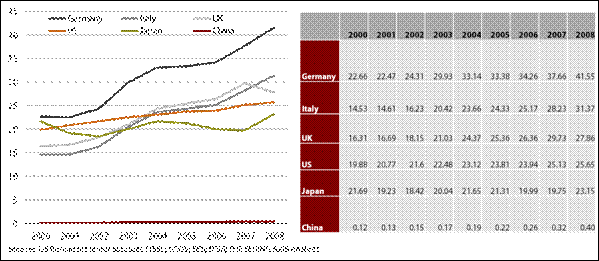International Operations – a new manufacturing plant in China
1. INTRODUCTION
In the current economic conditions, manufacturing markets are highly competitive. In order to succeed, companies have to maximize production, time to market and the cost of production. This forces corporations and companies to look for markets away from home which are more suitable for business. This makes international operations an important aspect of business for all companies whether they are small or large. The international operations of companies include offshore production, multinational operations, and selling products overseas (NEW YORK TIMES, 2011).
The last twenty years has seen a growing number of manufacturing companies fleeing to developing countries such as China, India, Taiwan, Thailand, etc. This has allowed companies to increase profitability due to low labour costs and higher foreign exchange rates. A number of complexities are involved in operating businesses on foreign soil; these range from supply chain and location design to customs and regulations.
Background
Until the mid-19th century, international operations were mostly in the form of trading. Most of the trading undertaken was confined to items such as spices, rare minerals and metals, wine, etc. The first steps towards mass movement of goods from one country to another started in the 17th and 18th centuries with the advent of the industrial revolution (ENGLISH ARTICLES, 2010), and then with technological advances and the loosening of trade restrictions, the standardization of policies among countries’ international operations and businesses increased rapidly with expanded consumer and supply markets (MARINA DERVISOPOULOS, James Hexter, Raimund Diederichs, 2008).
Figure 1 shows the three phases of the development of globalization.
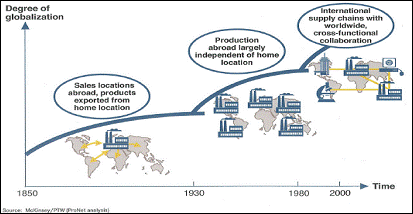
Figure 1: Development of globalization (MARINA DERVISOPOULOS, James Hexter, Raimund Diederichs, 2008).
In this case study, the issues faced by a foreign (Western) company in setting up a manufacturing plant in China and the opportunities available are discussed.
The People’s Republic of China was established in 1949 after the victory of the Chinese communist party. China then entered a period of international isolation when internal restructuring of the economies and reinforcement of the ideologies took place (KPMG MARWICK, Peat, 1997). China entered into the globalization in the late 1970s after the 1979 reforms, where imbalances in the economy were corrected and foundations were laid for a modernization drive towards manufacturing prosperity. Since then, a series of five-year plans have been implemented with the aim of modernizing the country’s agriculture, science, industry, etc., whilst the expansion of the overall production of consumer goods, energy and transport and the consistent reforming of finance, taxation and foreign trade were taking place simultaneously (NEWZEALAND TRADE & ENTERPRISE, 2010). The implementation of the “open door” policy in 1986 opened China up to foreign investment and encouraged the development of a market economy and the private sector (BBC, 2011). The establishment of special zones with autonomy in the 1980s further facilitated the economic development (KPMG MARWICK, Peat, 1997), with foreign investments taking place during this time, mostly in the form of joint ventures, and sole ownership becoming legal (WASHINGTON: GPO FOR THE LIBRARY OF CONGRESS, 1987). Figure 2 shows the deregulation and liberalization of the Chinese market in certain sectors over the years.
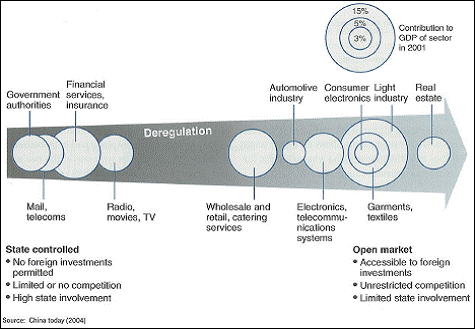
Figure 2: Deregulation of the Chinese market (MARINA DERVISOPOULOS, James Hexter, Raimund Diederichs, 2008)
2. OPPORTUNITIES
Before looking at the issues involved in setting up a manufacturing facility in China, a few of the opportunities for foreign companies to do business in China are discussed.
2.1 Cost Impact
The advantage of cost reduction in operating businesses in China is a major driving reason for foreign companies. The availability of cheap labour affects not only the finished product, but also the entire cost of the supply chain. To give an estimate of the difference in the labour costs between developed Western countries such as the USA and China, a study was conducted by a Beijing-based American consultant, Judith Banister, who concluded that 30 million city manufacturing workers worked for $1.06 an hour, whereas rural manufacturing workers earned an average of 45 cents an hour (COY, Peter, 2004).
2.2 Market Expansion
With the economic downturn and market potential reaching a bottleneck in Western countries, it is a good idea to operate manufacturing plants in China not only to reduce costs and increase profits on sales in Western countries, but also to take advantage of the new consumer markets in China that are increasing year after year. A good example is the Chinese automotive market that has grown into the largest in the world with sales of 13.8 million in China in 2009. Recently the Chinese government launched the “national projects of electric vehicles” and invested in the development of components, encouraging the development of environmentally-friendly parts and opening an opportunity for foreign companies to sell to the Chinese supply chain (US COMMERCIAL SERVICE, 2010).

Figure 4: Factors of attractiveness for Chinese market compared to others (MARINA DERVISOPOULOS, James Hexter, Raimund Diederichs, 2008).
3. SETTING UP
One of the considerations for a foreign (Western) company in setting up a manufacturing facility is whether to enter a joint venture (partnership with a local company) or a wholly-owned operation. Both have their drawbacks.
3.1 Joint Venture
A joint venture may offer existing plant, equipment, an existing brand and a market share with limited investment. However, one issue that arises is the lack of knowledge of the Chinese legal system, which forces foreign companies to rely on their Chinese partners. This leads to hidden risks regarding the shareholding proportions and the partnership status, and it may lead to the foreign company losing control of investments and a conflict of interests (SINOLINK CONSULTING, 2011). For example, Pepsi had to go to arbitration courts (World Trade Organization) to break a joint venture with the Sichuan Radio and Television development company after the Chinese company made deals without Pepsi’s approval, lavishly spending its money and making threats to Pepsi’s auditors about not opening the books (R.YALLAPRAGADA, RamMohan).
3.2 Wholly-Owned Enterprise
A wholly-owned enterprise is a limited liability company and it requires foreign companies to invest in it and provide technical expertise. These enterprises offer complete autonomy in managing the company and there is no transfer of technology. The issues in wholly-owned enterprises are finding a suitable location, getting approval from the government, and selecting the necessary workforce and managers whilst competing against strong domestic competitors. This makes the selection of a local agent extremely important, one who doesn’t select his own relatives, knows the local government, and understands the market dynamic (WEINER, Kenneth, 2004).
4. ISSUES
4.1 Construction
The construction of a facility may take between six and 18 months, hence special care may be taken in choosing the construction company. Common problems that arise are the delay in the construction of the plants due to the lack of a motivated workforce or the lack of effort on behalf of the construction company. This may affect the company’s plans to start production and complete potential orders. For this reason, a trustworthy person may be put in charge to make sure that the construction takes place at the right pace and that the company does not suffer (WEINER, Kenneth, 2004).
4.2 Land
Land acquisition is a complex issue and it is fundamental to the success of a new business. Foreign companies are not allowed to own land but they can lease it for a definite amount of time, similar in some aspects to Dubai. Acquiring new land usually takes about five months. Three types of land exist: collectively-owned land, allocated rights land, and granted land use rights. The collectively-owned land is mostly township-owned and it requires a transfer from the township to the central government before being transferred to a third party. The allocated rights land is state-owned and it can be obtained with no time limit, but it can be taken by the government at any time. The allocated rights land has to be transferred to granted status before any investment. The granted rights land allows the land to be used for a specific amount of time. These rights are transferable and the foreign company can use the land rights to raise loans, giving the granted rights as security, and it can later profit from any sales. Granted use rights land is also the most expensive and it usually has terms of 50 years for industrial use and 40 years for commercial use (WEINER, Kenneth, 2004). A foreign company should check the title of the land before acquiring it. In a joint venture, the land contributed by a Chinese company is state-owned, so the use of the land is limited without government permission. The transfer of land to commercial purposes requires approval and examination that is time-consuming (SINOLINK CONSULTING, 2011).
4.3 Intellectual Property Rights Breach
One of the major issues for foreign companies is the breach of intellectual property rights (IPR) by local companies. Inadequate and inconsistent enforcement of IPR laws has been a major problem. A good example is a failed joint venture between Chinese and UK engine manufacturers. After the UK company withdrew from the venture, the Chinese company continued producing engines under the UK brand name; the matter is still unresolved with the case being moved to an international court (China-a tiger in supply chain, 2005). Hence, companies setting up plants should recognize the risks of exposing processing technology to third party design companies and secure relevant IP rights in a timely fashion, i.e., before production (US COMMERCIAL SERVICE, 2010).
4.4 Rules and Legislation
Another issue for Western companies is the varying level of regulation in effect in different regions and provinces. These laws and regulations are often contradictory, and failure to obey them often results in unfavorable judgments because of the lack of an independent judiciary and the lack of cooperation in provincial judiciaries. Furthermore, the government’s regulations on day-to-day matters such as power supply restrictions, e.g., the shutting down of plants that are not air-conditioned at >40![]() affect the company’s operation. The lack of protection for foreign companies in certain areas of China is still an issue (China-a tiger in supply chain, 2005). Laws in China may also change quickly; a good example is the withdrawal of tax incentives such as tax breaks, duty-free imports of machinery, etc., in 1995 for foreign companies in China. This affected General Motors, which had to pay an additional $100 million of taxes after it had signed an agreement for a car plant (HAYS, Jeffrey, 2008). Another example is the BorgWarner and Shiyan Automotive Transmission Factory (SATF) JV agreement that took eight years of litigation and ambiguous rulings to break after the US commercial service intervened to aid the US Company (BOONTANAPIBUL, Churinthorn).
affect the company’s operation. The lack of protection for foreign companies in certain areas of China is still an issue (China-a tiger in supply chain, 2005). Laws in China may also change quickly; a good example is the withdrawal of tax incentives such as tax breaks, duty-free imports of machinery, etc., in 1995 for foreign companies in China. This affected General Motors, which had to pay an additional $100 million of taxes after it had signed an agreement for a car plant (HAYS, Jeffrey, 2008). Another example is the BorgWarner and Shiyan Automotive Transmission Factory (SATF) JV agreement that took eight years of litigation and ambiguous rulings to break after the US commercial service intervened to aid the US Company (BOONTANAPIBUL, Churinthorn).
4.5 Cultural differences
Culture differences have also proved to be an issue for foreign companies. It is imperative that Chinese customs are observed at every level, i.e., with the workforce, government personnel, and partners in the case of joint ventures. The concept of Guanxi, which can be described 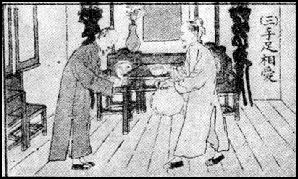 as an ongoing development of personal relationships or connections, is often undermined (China-a tiger in supply chain, 2005). Chinese people tend to put more faith in personal contacts than business contracts. Having good relationships with business partners and government personnel is a smart way to go. Additionally, seniority is regarded as more important than skills, so it is a good idea to have senior personnel managing the workforce or having a mix of a Chinese and non-Chinese management team to eliminate cultural differences that might affect the productivity of the manufacturing facility.
as an ongoing development of personal relationships or connections, is often undermined (China-a tiger in supply chain, 2005). Chinese people tend to put more faith in personal contacts than business contracts. Having good relationships with business partners and government personnel is a smart way to go. Additionally, seniority is regarded as more important than skills, so it is a good idea to have senior personnel managing the workforce or having a mix of a Chinese and non-Chinese management team to eliminate cultural differences that might affect the productivity of the manufacturing facility.
Meeting clients or partners with gifts is a traditional custom and it is treated positively (HAYS, Jeffrey, 2008).

Figure 6 shows the comparison of cultural dimensions between China and the USA.
Figure 6: Comparison between cultural differences in China and the USA (BOONTANAPIBUL, Churinthorn)
4.5 Low Wages (Future issue)
Another issue for a foreign company is the recent trend of increasing workers’ wages. A recent report by Accenture points out that the 13 provinces in China recently increased the minimum wages by an average of 20 per cent. A good example is Foxconn that has increased its workers’ monthly wages by 1,100RMB from 900RMB to 2,000RMB, equivalent to $300, following an increase in worker turnover and cases of worker suicide. Although the wage increase would only reduce profit margins by 1–5 per cent, the foreign company should consider the price increase in the next five years and how it should deal with it in the future (ACCENTURE , 2011).
5. CONCLUSION
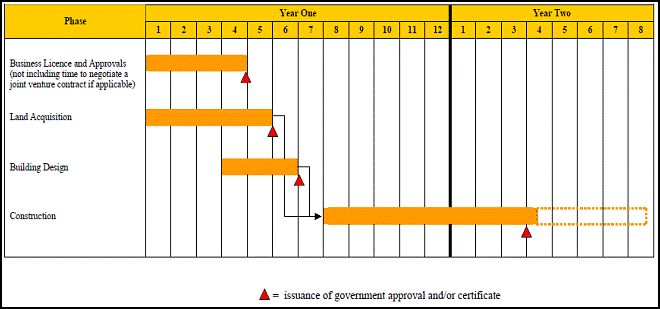
Figure 7: Processes to establish a manufacturing facility in China (WEINER, Kenneth, 2004)
The development of China can be attributed mainly to the advent of foreign companies setting up their business there. Over time, China has improved in many areas; however, there is still a great deal to be desired with regard to laws and regulations, IPR protection, and a skilled workforce. Since foreign investment is not slowing down, China is improving gradually and it is now moving towards becoming an advanced economy like Japan. Foreign companies wanting to succeed in China should consider the issues outlined in the report and perform with due diligence. Figure 7 gives a rough estimation of how long it takes to set up a plant in China and the different processes involved.
6. Bibliography
ACCENTURE. 2011. Wage increases in China: should multinationals rethink their manufacturing and sourcing strategies? [online].
BARRY. 2010. The Competitiveness of China’s Labour Costs – The China Sourcing Blog. [online]. [Accessed 16 April 2011]. Available from World Wide Web: < HYPERLINK “http://www.chinasourcingblog.org/2010/11/labourcosts.html” http://www.chinasourcingblog.org/2010/11/labourcosts.html >
BBC. 2011. BBC News – China timeline. [online]. [Accessed 29 April 2011]. Available from World Wide Web: < HYPERLINK “http://news.bbc.co.uk/1/hi/world/asia-pacific/country_profiles/1288392.stm” http://news.bbc.co.uk/1/hi/world/asia-pacific/country_profiles/1288392.stm >
BOONTANAPIBUL, Churinthorn. Doing Business in China: Cultural Factors, Startup Concerns, and Professional Development. Bangkok.
China – a tiger in supply chain. 2005. Cambridge.
COY, Peter. 2004. Just How Cheap is Chinese Labour. [online]. [Accessed 18 april 2011]. Available from World Wide Web: < HYPERLINK “http://www.businessweek.com/magazine/content/04_50/b3912051_mz011.htm” http://www.businessweek.com/magazine/content/04_50/b3912051_mz011.htm >
DERVISOPOULOS, Marina, Hexter, James, and Diederichs, Raimund. 2008. Global Production. Germany: Springer.
ENGLISH ARTICLES. 2010. History of international trade of English Articles. [online]. [Accessed April 2011]. Available from World Wide Web: < HYPERLINK “http://www.englisharticles.info/2010/07/04/history-of-international-trade/” http://www.englisharticles.info/2010/07/04/history-of-international-trade/ >
HAYS, Jeffrey. 2008. Chinese Business Customs – Etiquette, Negotiations and Hassles – China Facts and Details. [online]. [Accessed 17 April 2011]. Available from World Wide Web: < HYPERLINK “http://factsanddetails.com/china.php?itemid=368&catid=9&subcatid=59” l “01” http://factsanddetails.com/china.php?itemid=368&catid=9&subcatid=59#01 >
HAYS, Jeffrey. 2008. Foreign Companies and Investment in China – China Facts and Details. [online]. [Accessed 23 April 2011]. Available from World Wide Web: < HYPERLINK “http://factsanddetails.com/china.php?itemid=349&catid=9&subcatid=62” http://factsanddetails.com/china.php?itemid=349&catid=9&subcatid=62 >
KPMG. 1997. Investment in the People’s Republic of China. [online].
NEW YORK TIMES. 2011. International Operations. [online]. [Accessed 26 April 2011]. Available from World Wide Web: <HYPERLINK “http://management.about.com/cs/international/” http://management.about.com/cs/international/ >
NEW ZEALAND TRADE AND ENTERPRISE. 2010. China Country Brief. [online].
SINOLINK CONSULTING. 2011. The Common Problems Occur to Foreign Investors by Setting up Joint Venture in China. [online]. [Accessed 19 April 2011]. Available from World Wide Web: < HYPERLINK “http://www.buzzle.com/articles/the-common-problems-occur-to-foreign-investors-by-setting-up-joint-venture-in-china.html” http://www.buzzle.com/articles/the-common-problems-occur-to-foreign-investors-by-setting-up-joint-venture-in-china.html >
US COMMERCIAL SERVICE. 2010. Doing Business in China. [online].
WASHINGTON: GPO FOR THE LIBRARY OF CONGRESS. 1987. China – Reform Of The Economic system, Begining in 1979. [online]. [Accessed 28 April 2011]. Available from World Wide Web: < HYPERLINK “http://countrystudies.us/china/92.htm” http://countrystudies.us/china/92.htm >
WEINER, Kenneth. 2004. Legal Aspects of Establishing a Manufacturing Operation in China. [online].
YALLAPRAGADA, RamMohan. Doing Business in China: Investor Beware. [online].
